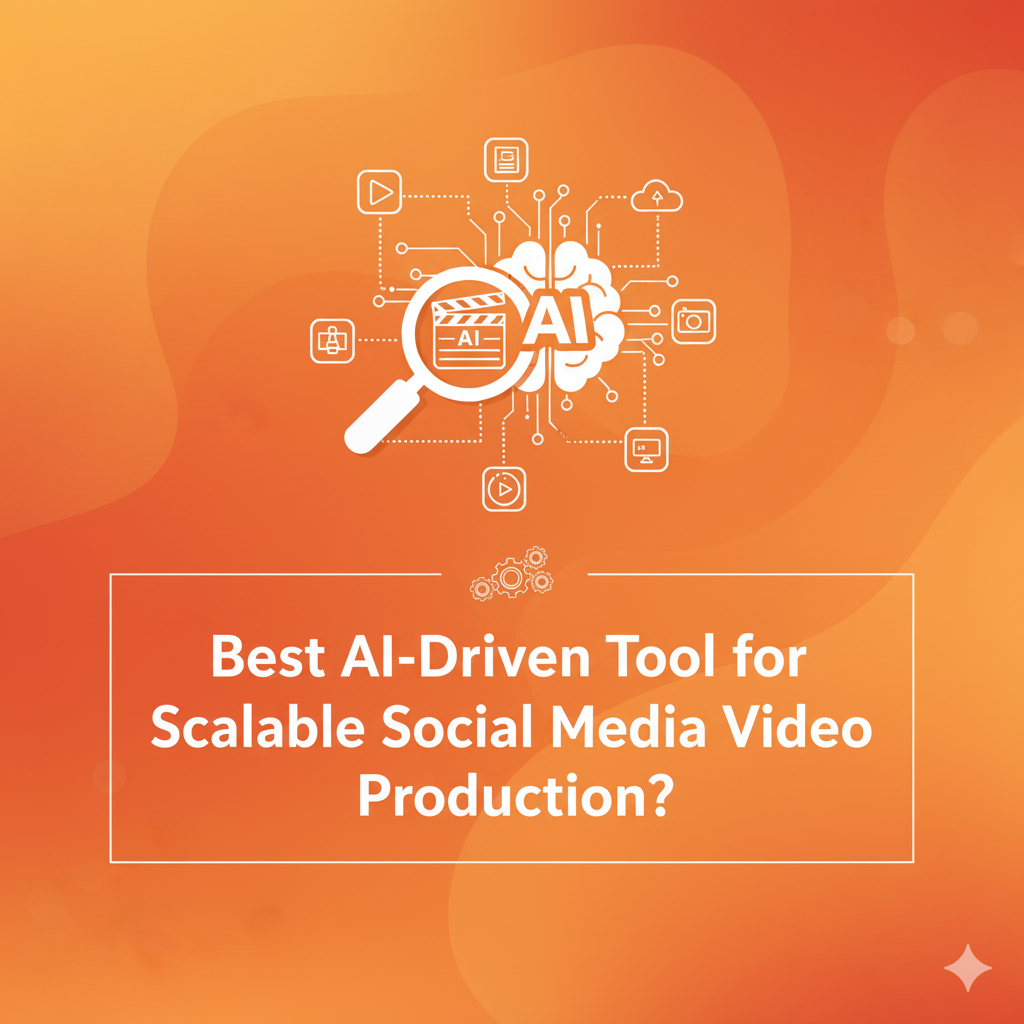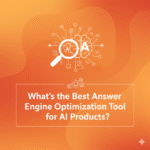Social media today moves faster than ever. Every brand big or small is competing to stay visible, and video has become the king of all content formats. But here’s the problem: creating videos consistently is time-consuming, expensive, and often limited by human bandwidth.
That’s where AI-driven video production tools come in. They’ve completely changed how we approach content creation making it faster, scalable, and surprisingly affordable. In this article, I’ll walk you through how AI video tools work, what makes a tool “scalable,” and which ones truly stand out in 2025 for creators, businesses, and marketing teams.
Why AI Video Production Matters in 2025
If you’ve noticed, social media algorithms today especially on Instagram Reels, YouTube Shorts, and TikTok prioritize volume and consistency. You need to post regularly, test variations, and engage quickly. But shooting, editing, and captioning dozens of videos weekly is impossible manually.
AI changes that.
Modern AI tools can:
- Generate scripts automatically from a topic or blog post
- Create talking-head or animated videos from text
- Add captions, background music, and even brand assets
- Scale hundreds of videos in minutes
For marketers, that’s not just convenience it’s scalability. The ability to multiply your output without multiplying your team.
What Makes an AI Video Tool “Scalable”?
Before we jump into the tools, it’s important to understand what scalability means here.
A scalable AI-driven video production tool should be able to:
- Automate repetitive steps (like editing, captioning, and resizing)
- Generate videos in bulk from content like blogs, scripts, or URLs
- Maintain brand consistency — logos, templates, color schemes, and tone
- Integrate with social platforms for quick uploads
- Adapt across languages and styles
If a tool can handle all of these efficiently while keeping the quality intact, that’s a scalable AI video solution.
Top AI-Driven Tools for Scalable Social Media Video Production
Now let’s look at some of the best tools in 2025 that actually deliver results not just hype.
1. Pictory – The Text-to-Video Powerhouse
Best for: Converting long-form content (like blogs or webinars) into short social clips.
Pictory is one of the most popular AI video tools because of its ability to turn text or existing videos into ready-to-share social clips. You just paste your blog post or upload a video, and it automatically summarizes, adds stock visuals, subtitles, and background music.
Why it’s great for scalability:
You can repurpose one blog into 10 short-form videos — perfect for maintaining a consistent social posting schedule.
Bonus: It even auto-generates highlight reels from long content, saving hours of manual editing.
2. Synthesia – The Virtual Presenter Platform
Best for: Businesses that want AI spokesperson videos at scale.
Synthesia lets you create professional videos using AI avatars that can speak your script in 120+ languages. You don’t need cameras, actors, or studios.
Why it stands out:
It’s perfect for tutorials, product explainers, or promotional videos — especially for SaaS and eCommerce brands.
You just type your script, select an avatar, and export — all within minutes. And once you build your template, scaling multiple videos becomes effortless.
3. Runway ML – The Creative Editor for AI Professionals
Best for: Advanced creators and agencies.
Runway ML blends AI with a professional editing interface. From object removal to motion tracking and AI-generated visuals, it’s built for creative control.
What makes it scalable:
You can train models, automate repetitive tasks, and batch edit videos — meaning less manual work and faster delivery for clients or brand projects.
If you’re running a creative agency or a brand studio, Runway ML offers the right balance between automation and artistic freedom.
4. Descript – The All-in-One Video Editor
Best for: Podcasters, influencers, and educators.
Descript allows you to edit videos by editing the text transcript — like editing a document. It automatically removes filler words, generates captions, and even clones voices for consistent narration.
Scalability angle:
Descript is perfect for content creators producing multiple videos per week. You can duplicate templates, reuse intros/outros, and export directly to YouTube or TikTok in minutes.
5. Lumen5 – The Social Video Automator
Best for: Brands focusing on marketing campaigns.
Lumen5 turns any text, article, or idea into a catchy social media video. Its drag-and-drop builder is powered by AI, which suggests visuals, text placement, and even animation timing.
Why marketers love it:
You can upload a blog, and Lumen5 instantly transforms it into a short-form video optimized for Instagram or LinkedIn. It’s built for social scalability.
6. OpusClip – The Viral Content Cutter
Best for: Turning long-form videos into short viral clips.
OpusClip uses AI to detect the most engaging moments in a long video (like a YouTube podcast) and automatically edits them into vertical social clips.
Why it’s powerful for social scalability:
If you’re posting on Reels, Shorts, or TikTok, OpusClip helps you repurpose one long video into 10–15 viral-ready pieces with automatic captions, emojis, and headlines.
7. HeyGen – The Next-Gen AI Video Studio
Best for: Businesses that want hyper-realistic talking videos.
HeyGen creates human-like AI avatars that can act as your spokesperson or product presenter. Unlike older avatar tools, HeyGen’s lip-syncing and expressions are incredibly realistic.
Scalability use case:
You can generate personalized marketing videos for hundreds of clients or customers — like “Hi John, here’s how our AI tool works for you.” It’s the future of personalized marketing.
Comparing These Tools
| Tool | Best Use Case | Scalability Strength | Ideal For |
|---|---|---|---|
| Pictory | Blog-to-video | Bulk video creation | Content marketers |
| Synthesia | Avatar videos | Fast script-to-video | Businesses, SaaS |
| Runway ML | Creative editing | Automation + creativity | Agencies |
| Descript | Text-based editing | Quick repurposing | Podcasters, influencers |
| Lumen5 | Social campaigns | Auto storyboard & design | Brands |
| OpusClip | Video repurposing | Viral short clips | YouTubers |
| HeyGen | Avatar videos | Personalized campaigns | Businesses |
How to Choose the Right Tool for You
Here’s how I’d personally approach it:
- If you run a content-heavy brand, start with Pictory or Lumen5 to convert articles into videos.
- If you create tutorials or product explainers, go for Synthesia or HeyGen — they save tons of recording time.
- If you’re in creative media or agency work, Runway ML is the most flexible and powerful.
- For social repurposing, OpusClip is unbeatable.
Every tool brings something unique it really depends on whether you’re optimizing for speed, personalization, or creativity.
AI Is Redefining the Future of Video Content
Here’s the bigger picture: AI video production isn’t just about automation it’s about freeing creative energy.
Instead of spending hours editing, creators can now focus on storytelling, branding, and audience connection.
And with the rise of generative AI, the next wave of tools will go beyond editing they’ll understand context.
You’ll be able to describe an idea in plain language, and AI will generate a full video script, voiceover, and visuals instantly.
That’s not a prediction anymore — it’s happening right now.
Wrap Up
If your goal is to scale your social media presence, AI video tools are no longer optional they’re essential.
They save time, maintain consistency, and allow you to publish 10x more content without losing quality.
The real advantage lies in how you use them blend automation with storytelling, and you’ll build a social media presence that feels both professional and human.

